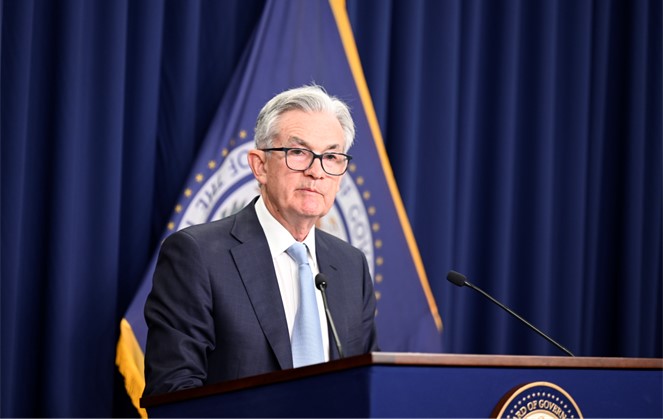
Jerome Powell and FOMC Will “continue to monitor the implications of incoming information”
The Federal Open Market Committee (FOMC) voted to raise overnight interest rates from the previous target of 4.25% – 4.50% to the new target of 4.50% – 4.75%. This was announced at the conclusion of the Committee’s first scheduled meeting of 2023. The monetary policy shift in bank lending rates was as expected by economists and the markets as the overwhelming consensus was for a 25 bp move. It has been less than 12 months since the Fed began this tightening cycle, overnight rates since the beginning of last year have increased from near 0.00% to the current target of up to 4.75%.
One recent market focus has been that inflation has been, by most measures, trending lower each month. While lower increases may suggest that inflation is successfully being wrung out of the system, Powell and the other FOMC members have a 2% target for inflation which guides their policy. The current level is more than two times as high. The art of being the nation’s top bankers and economists trying to provide a soft landing for the still strong economy, is difficult. The result of the actions taken by the Fed can only be seen in the rearview mirror, months after the action.
Synopsis of Fed Decisions
The Board of Governors of the Federal Reserve System voted unanimously to approve a 1/4 percentage point increase in the primary credit rate to 4.75 percent, effective February 2, 2023. In a related decision, the Board of Governors of the Federal Reserve System voted unanimously to raise the interest rate paid on reserve balances to 4.65 percent, effective February 2, 2023.
Text from Federal Reserve’s Statement February 1, 2023
Recent indicators point to modest growth in spending and production. Job gains have been robust in recent months, and the unemployment rate has remained low. Inflation has eased somewhat but remains elevated.
Russia’s war against Ukraine is causing tremendous human and economic hardship and is contributing to elevated global uncertainty. The Committee is highly attentive to inflation risks.
The Committee seeks to achieve maximum employment and inflation at the rate of 2 percent over the longer run. In support of these goals, the Committee decided to raise the target range for the federal funds rate to 4-1/2 to 4-3/4 percent. The Committee anticipates that ongoing increases in the target range will be appropriate in order to attain a stance of monetary policy that is sufficiently restrictive to return inflation to 2 percent over time. In determining the extent of future increases in the target range, the Committee will take into account the cumulative tightening of monetary policy, the lags with which monetary policy affects economic activity and inflation, and economic and financial developments. In addition, the Committee will continue reducing its holdings of Treasury securities and agency debt and agency mortgage-backed securities, as described in its previously announced plans. The Committee is strongly committed to returning inflation to its 2 percent objective.
In assessing the appropriate stance of monetary policy, the Committee will continue to monitor the implications of incoming information for the economic outlook. The Committee would be prepared to adjust the stance of monetary policy as appropriate if risks emerge that could impede the attainment of the Committee’s goals. The Committee’s assessments will take into account a wide range of information, including readings on labor market conditions, inflation pressures and inflation expectations, and financial and international developments.
Take-Away
Higher interest rates can weigh on stocks as companies that rely on borrowing may find their cost of capital has increased. The risk of inflation also weighs on the markets. Additionally, investors find that alternative investments that pay a known yield may, at some point, be preferred to equities. For these reasons, higher interest rates are of concern to the stock market investor. However, an unhealthy, highly inflationary economy also comes at a cost to the economy, businesses, and households.
The statement suggests the Fed continues to remain data dependent, but expects further increases will follow. The statement did not provide strong guidance as to what to expect following future meetings.
Chairman Powell’s 2:30 PM ET press conference can be viewed here.
Managing Editor, Channelchek